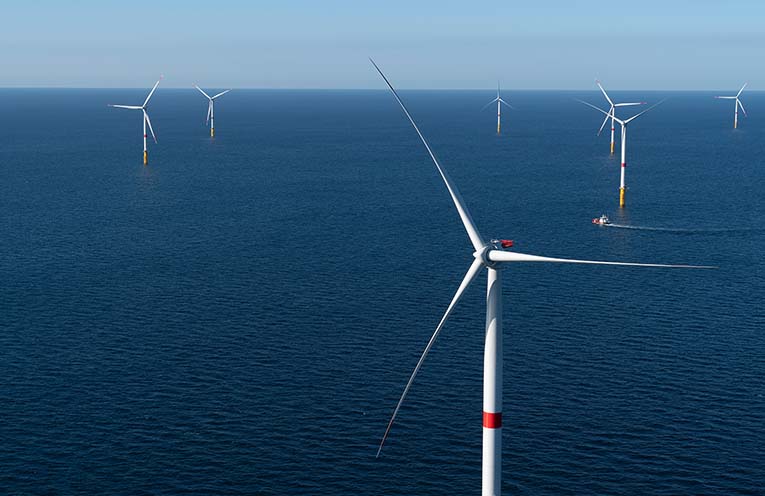
IMPACTS on whales have been a major feature of local offshore wind debate in recent months, with opponents of the renewable energy proposal expressing major concerns that the iconic marine mammals will be negatively affected by the installation and operation of wind turbines off the coast of Port Stephens.
Port Stephens is a well known viewing location for the annual migration of whales north and south, with the region home to a thriving industry of tours to experience them up close.
 Advertise with News of The Area today.
Advertise with News of The Area today.It’s worth it for your business.
Message us.
Phone us – (02) 4981 8882.
Email us – media@newsofthearea.com.au
The zone declared for potential offshore wind projects begins 20 kilometres off the Port Stephens coast, begging the question as to how close migrating whales would come to any offshore wind project, if approved.
In the November 9 Edition of News Of The Area, a prominent local whale tourism operator made the claim that the Hunter declared offshore wind area was “directly in the path of the whale migration”.
EcoNetwork Port Stephens’ Brian Tehan questioned the accuracy of those comments, citing a study titled ‘An update of the east Australian humpback whale population (E1) rate of increase’, from the International Whaling Commission Scientific Committee.
In June and July 2007, a group of researchers conducted a six-week land-based survey from Pt Lookout on North Stradbroke Island in Queensland, alongside extensive aerial surveys from low-flying aircraft, to provide an update on the east Australian humpback whale population.
The study found that only about three percent of whale groups passed more than ten kilometres (km) off the headland.
Approximately 89 percent of groups passed within five km of land and the mean distances offshore for both aerial and land-based surveys were less than 2.5 km.
“The research on the east coast whale migration found that 89 percent of whales travelled within five km of the coast at an average distance of 2.5 km – which matches up exactly with where the (whale watching) tours go – they’re mostly a couple of kilometres offshore, not 40km.
“The claim that the majority of the whales are travelling 30-40 km out from the coast is obviously wrong, as the science and our own observations tell us,” Mr Tehan said.
However, the survey focused on the northern whale migration, and while the survey recorded some southbound migration, this data was excluded from the analysis.
Long term whale advocate Frank Future, the owner of locally-based whale tour operator Imagine Cruises, said whales’ migratory habits change depending on the direction they are travelling.
“During the northbound migration from May to early August nearly all the humpbacks and minke whales travel within 10 kilometres of the coast.
“On their return south from early September to the end of October, most of the whales are out wider, taking advantage of the southbound East Australian Current (EAC).
“It isn’t uncommon to see whales during this time all the way out to the continental shelf, some 25 nautical miles or 40 km offshore.
“Humpback mothers with newborn calves tend to come in close along the coast during October so a lot of folk assume that all the whales are coastal travelling, but that is not the case.”
Mr Future, who has staunchly opposed the offshore wind proposal since it was first announced, estimates that “up to 50 percent of the whales are travelling over the continental shelf 35 km out” during the southbound migration.
“When we are offshore during the southern migration in about 100 metres depth and about ten km offshore, we can see whales breaching at least 10-15 km further out again.
“I can assure you the whales take advantage of the fast moving East Australian Current (EAC) which is strongest on the shelf, particularly as they are getting tired and haven’t eaten much for six months, mainly living off their fat reserve,” he said.
Last month, Mr Future took a group of birders out to the continental shelf, reporting seeing a range of species within the declared offshore wind zone.
“I was particularly interested in the birdlife and other wildlife we saw in the areas proposed for the wind farms, from 20 km to 40 km directly east of the port.
“We saw four different species of albatross, numerous shearwater species and petrels and a red-tailed tropic bird which I have never seen close inshore.
“We also saw a pod of pantropical spotted dolphins, which we virtually never see close inshore.
“Plus, there were several other pods of oceanic bottlenose and common dolphin, all seen in the proposed area.
“We didn’t see any whales but that wasn’t surprising because they had largely all passed (on their southern migration) already,” he said.
The Department of Climate Change, Energy, the Environment and Water say the process for assessing and declaring areas as suitable for offshore wind aims to avoid, as much as possible, known sensitive areas and migratory paths.
However, EPBC Act and state or territory environmental approvals are still required by feasibility licence holders, prior to applying for commercial licences.
By Marian SAMPSON
